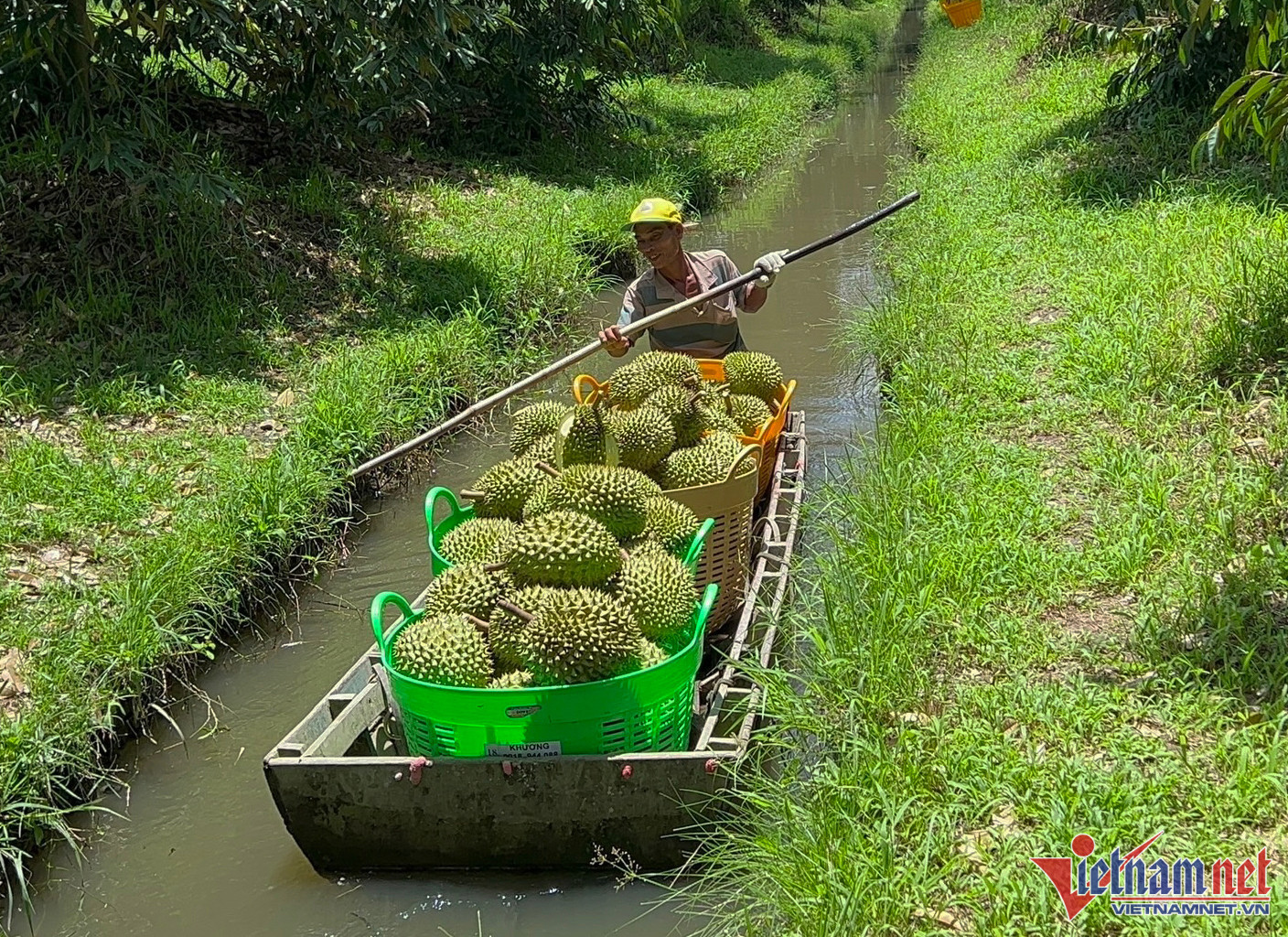
China is no longer a market easy to please. It has begun raising standards and tightening control over imports. Vietnam’s farm produce now has to satisfy a lot of standards in labeling, packing, food hygiene and traceability to be able to enter the Chinese market.
The granting of codes to growing areas and packaging facilities comes from the request of the Chinese customs agency. The requirement was made in 2018 and began in 2019. Under the new regulations, before fresh fruits are exported to China under the official quota, the codes of growing areas and packaging facilities must be shown on the phytosanitary certificate.
To boost exports, for every type of farm produce, Vietnamese agencies have to spend time with Chinese agencies to get the nod on Vietnam’s exports.
To export durian, for example, according to the Ministry of Agriculture and Rural Development (MARD), it took the agency four years to negotiate with China to obtain the right for durian to enter the market.
Meanwhile, the Chinese customs agency has only approved 51 growing areas and 25 packaging establishments that can meet the requirements.
Hoang Trung, director of MARD’s Plant Protection Department, said farmers in durian growing areas are excited as the fruit can now be exported officially to China. The first shipment will depart for the market the next week.
However, Region 7’s plant quarantine agency of the department unexpectedly discovered 18 durian container trucks in Lang Son province and waiting for export to China.
The durian containers showed the codes of growing areas and packaging facilities of Tien Giang, which had just been approved by China. The enterprise authorizing export products showed addresses in Lang Son and Tien Giang.
Nevertheless, the unit that owns this growing area code said that it did not authorize any other businesses to use the codes to prepare export procedures. At the fields of the unit, durian still had not borne fruit, or the fruits were still too young.
The problem once happened in mid-August 2020. The Plant Protection Department said that Chinese agencies asked to temporarily stop the import of mangoes from the growing areas and packaging establishments related to 220 consignments of mangoes. The two sides joined forces to find solutions to fix the problems and improve management.
Dong Thap province, after an investigation, discovered that businesses used the wrong codes and ‘borrowed’ codes from each other to export products.
Growing-area codes are considered a ‘passport’ for fruits to be exported to markets, including China.
In March 2022, MARD released a direction on strengthening management over growing areas and packaging facility codes after it discovered fraud in using codes and violations of regulations on food quarantine.
Nguyen Thi Thu Huong, deputy director of the Plant Protection Department, has also given a warning about the impersonation of growing areas at a conference on exporting durian to China.
She stressed that it is difficult to open up the Chinese market, but it would be even more difficult to retain the market. If China discovered impersonation behavior, it may close the doors to Vietnam’s produce.
“If this happens, negotiations for market re-opening would be even much more difficult than the first negotiations,” Huong said.
She stressed that just one farmer or business committing fraud would be enough to affect all durian farming.
One expert warned that Vietnamese farmers and exporters would not only lose the Chinese market but other markets as well if they committed fraud.
MARD Minister Le Minh Hoan said: “Fool me once, shame on you. Fool me twice, shame on me.” MARD standardizes varieties, processes, markets and knowledge of farmers.
He said the production of durian and other farm produce should be done under the standards to retain markets, and protect the image and prestige of Vietnam’s produce.
To date, 11 Vietnamese fruits can be exported full-tax to the Chinese market, including mango, dragonfruit, bananas, longan, litchis, water melon, rambutan, jackfruit, mangosteen, passion fruit and durian.
As of the end of August, Vietnam had exported $967.5 million worth of vegetables and fruits to China, a drop of 32.4 percent compared with the same period last year.
China remains the biggest fruit client of Vietnam, but its consumption of Vietnam fruits has fallen from 56 percent to 44.1 percent.
Tam An